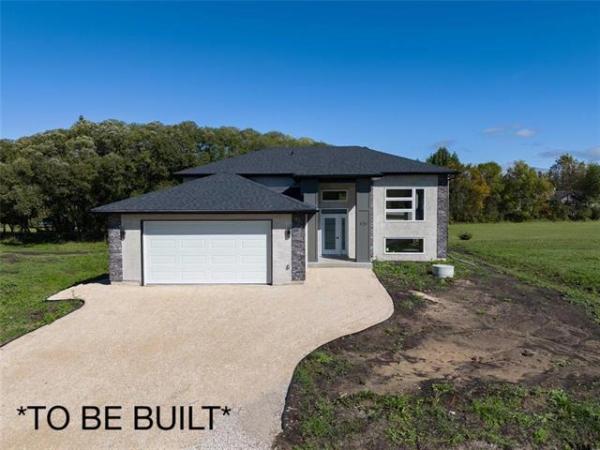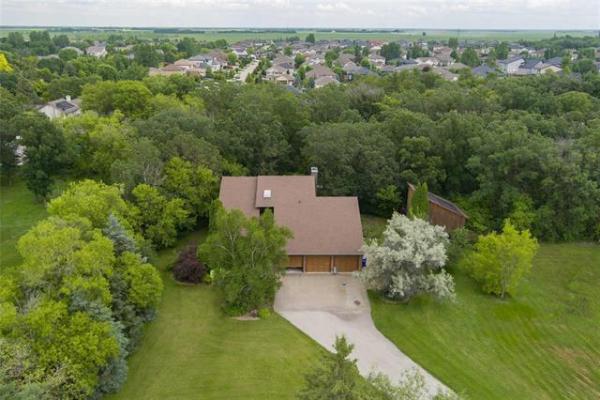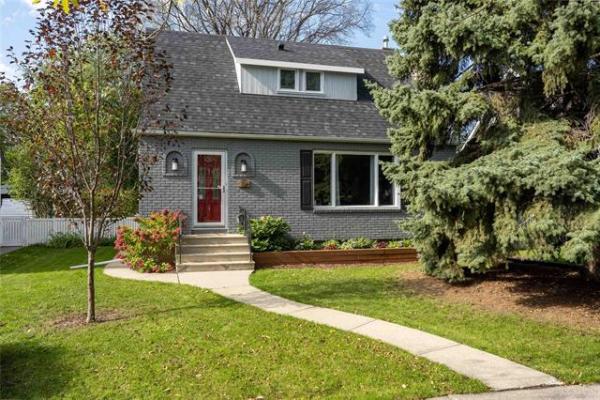Got that sinking feeling as you contemplate another summer of cutting, fertilizing, watering and generally playing slave to your lawn? The low-mow grass folks say they've found the solution.
Sold under various brand names -- Eco-Lawn, available from Wildflower Farm (www.wildflowerfarm.com), is a popular one -- the product is a blend of four to seven fescue grasses. Fescue stops growing at about 23 centimetres, at which point it flops over to a depth of about 10 cm, giving the lawn a combed (some say shaggy) appearance.
A monthly cutting keeps the grass at about eight cm. Regular grass seed contains fescue, but also Kentucky bluegrass and other fast and high-growing varieties.
Low-mow grass is touted as drought-resistant, meaning minimal watering is required once established. That camel-like quality is thanks to its deep roots and thin blades, which create minimal transpiration, but also reportedly give low-mow lawns a wispy look. The grass typically needs no fertilizer, and stands up to children and pets. Less watering and less need of energy-hungry lawn-mowing makes low-mow grass eco-friendly.
"It's still there, it's serviceable," said Neal Klassen, Water Smart co-ordinator for the City of Kelowna, B.C., which in 2006 planted 1,850 square metres of library grounds with Eco-Lawn. The area, he says, is used for children's summer programs, and the grass has stood up well.
Although it's surrounded by concrete and has a southerly exposure, Klassen said the library lawn requires roughly 50 per cent less watering than other city properties. He adds that Kelowna bakes in the summer, and that in another climate the lawn might need no watering at all.
On the other hand, the wispy, inconsistent appearance means "it's not the showpiece lawn of the city." Klassen says the grass might look better if it were allowed to grow longer, but a city contract means all lawns are trimmed regularly.
Hoping to reduce water usage, in 2006, Kelowna also recruited 20 volunteer homeowners to either seed new lawns or overseed existing lawns with low-mow grass. It took two full seasons to establish the new lawns, there were weed problems as with most seeded lawns, and the overseeding flopped because homeowners became impatient with the transition. Also, clover crept in, creating hand-wringing among fans of putting-green-like lawns.
"Those who loved it, still love it; those who hated it, still hate it," said Klassen.
The word about low-mow grass business is spreading faster than dandelions. Sales of Eco-Lawn increased 30 per cent in 2008 over the previous year, according to Miriam Goldberger, who launched Wildflower Farm with her husband in 1997. The retailer network is also igniting.
Eco-Lawn sells for $36.99 for 2.2 kilograms, enough to seed 90 square metres. Go to www.eco-lawn.com for a list of retailers across Canada.
Home Depot carries the EcoTurf low-mow line. At $25.99 for two kilograms, it contains just four types of fescue, which some say causes a clumpy appearance.
-- Canwest News Service
Great lawn takes work, not a lot of money
It's a funny thing about people with gardens. They may not always strive to have the best-looking flower beds on the block, but they nearly always want their lawn to look perfect.
This might mean hiring a lawn-care company to fertilize and maintain the grass, sometimes at considerable expense. In some provinces, this means the careful removal of weeds rather than treatment with selective herbicides because these products have been banned.
You can have a perfect lawn without spending large amounts of money on hired help, as long as you're willing to put in a couple of days in the early spring laying the foundation. After that, the maintenance only consists of proper mowing.
The jobs that need doing are top-dressing, seeding and then fertilizing.
If your lawn has uneven areas or bare spots, it should be top-dressed. This means spreading a half-and-half mixture of topsoil and peat or coir.
If your lawn has mounds, level them with a lawn roller. You can rent them from large hardware stores. Half-fill it with water to give it weight, and roll it over a slightly damp lawn to level the high spots.
If your lawn has bare spots, or the grass growth is looking a bit thin in places, consider buying grass seed. Make sure it is a blend of seeds form several grass varieties. If the bare spots and thin areas are small, spread the seed by hand. For large areas, rent or borrow a seed spreader. Divide your seed in half and spread half in a north-south direction, and the other half in an east-west direction for full coverage.
Spread the seeds right after spreading the top-dressing so they settle into the newly distributed soil mix. If you are spreading over large bare spots, it's a good idea to press the seeds into the soil mix with a roller or a flat board. For smaller areas, walk over the area and tamp them into the soil.
Regardless of whether you've done any top-dressing or seed spreading, your lawn should be fed every spring to keep it vigorous and healthy. You have a couple of choices of how to do this.
Granular fertilizers can be spread (either by hand or with a spreader depending on the amount) so that they release their nutrients into the soil over the next few weeks as rain and your watering efforts dissolve them.
Liquid fertilizers can be spread (usually via an applicator attached to the end of a hose) so they soak into the soil. You can repeat this operation every couple of weeks during the spring and early summer.
The only thing left is to maintain the lawn properly. This means cutting the grass regularly once a week, but doing it with the cutting blades on your mower at five centimetres or higher.
This will avoid cutting the grass too short. Grass at this height will shade the weed seeds so they don't grow as well and the grassroots so they don't dry out too quickly.




